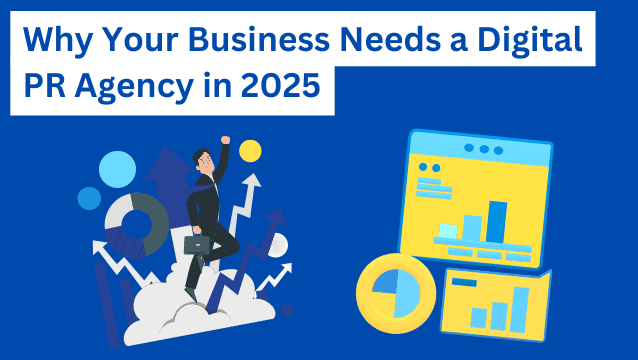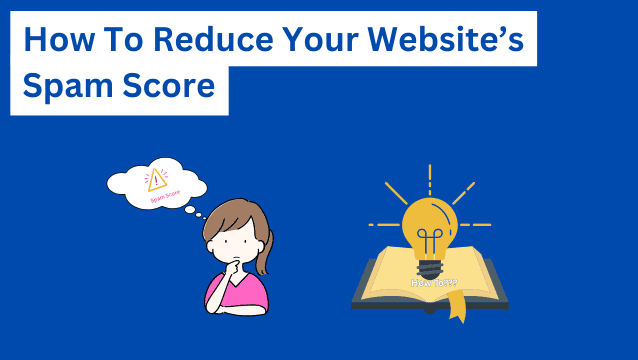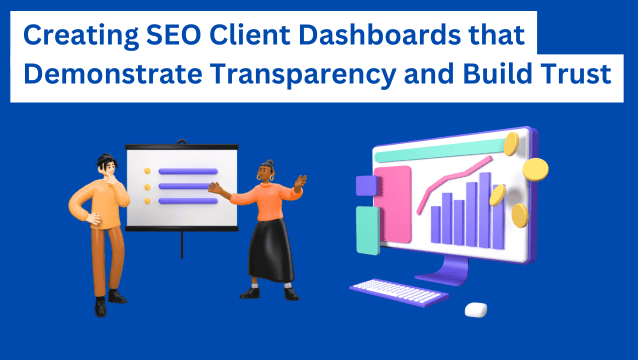The business-to-business (B2B) software-as-a-service (SaaS) market is packed. New tools seem to launch every week, all claiming to be smarter and easier to use.
The problem is that most companies lead their marketing campaigns with product specs. They focus on integrations, dashboards, and speed. They assume buyers make decisions on technical features.
But features alone don’t close deals.
Buyers choose products that make their job easier, their revenue higher, or their customers happier. If you don’t show how your product does that, potential customers have no reason to choose you over the competition.
To stand out, you need a B2B SaaS product marketing strategy that builds trust. You need to speak directly to customer pain points and prove value at every stage of the buyer journey.
Let’s take a closer look at how you can create a product marketing strategy that shows customers how your product delivers the solutions they need.
Highlights
- B2B SaaS product marketing goes beyond features — Buyers don’t choose products for dashboards or integrations; they choose tools that solve pain points, drive revenue, and improve workflows. Marketing must focus on outcomes, not specs.
- Outcome-driven messaging wins deals — The most effective SaaS marketers tie features to measurable business results, supported by proof like case studies, testimonials, and customer success stories.
- Segmentation and personalization are critical — Successful SaaS brands segment their Ideal Customer Profile (ICP) by industry, role, and use case, then use AI and automation to deliver tailored campaigns at scale.
- Product-led growth (PLG) and lifecycle marketing drive adoption and retention — Free trials, freemium models, and smooth onboarding accelerate time-to-value, while ongoing campaigns reinforce ROI and reduce churn.
- Alignment and balance fuel growth — SaaS leaders align sales, product, and marketing teams around shared KPIs, while balancing long-term brand awareness with short-term demand generation to lower acquisition costs and boost conversion rates.
What’s product marketing (and SaaS product marketing)?
Product marketing means creating and executing a strategy to bring a specific product to market and drive its adoption.
Product marketers define the product’s target audience, craft marketing content for that audience (and sales copy for the product), and distribute it. They then work to make sure customers continue to understand and experience its value over time.
In B2B SaaS, product marketing sits at the intersection of product, sales, customer success, and marketing.
It connects these teams so everyone’s on the same page about what the product does, who it’s for, and why it matters.
At its core, product marketing comes down to four things:
(Image by Ioana)
- A go-to-market driver: Creating tools and strategies that take a product from concept to revenue. This includes everything from launches to adoption campaigns.
- A bridge between departments: Aligning product, sales, and marketing. This helps everyone communicate the same value proposition.
- The voice of the customer: Understanding buyer pain points and translating them into personalized messaging.
- The owner of the product’s story: Crafting narratives that show how features translate into real-world outcomes.
TL;DR: Product marketing is about building the story and assets that make products irresistible to the right audience.
And it’s about making sure it stays relevant long after launch.
Why SaaS product marketing is more important than ever
In the SaaS market, competition is fierce, churn is dangerous, and buyers expect more than ever before.
Product marketing strategy is the glue that holds SaaS growth together.
Here’s why it matters.
- The product is the engine: SaaS relies on a product-led growth model and self-service sales. (Where the software sells itself through free trials and demos.) Product marketing is there to make this easier. It shapes onboarding flows and trial experiences to push users toward their “Aha!” moment.
- Complex buyer journeys: B2B SaaS purchases involve multiple decision-makers. Each has different priorities and levels of technical understanding. Product marketing creates the assets (case studies, battle cards, demos) that address each perspective. The goal is to guide the whole buying team through every stage.
- Cross-functional alignment: Without product marketing, sales, product, and customer success operate in silos. Product marketers try to align these teams on customer needs and messaging. This delivers a more coherent message at all points in the customer journey.
- Intense competition: The SaaS market has a low barrier to entry. Without differentiated positioning, your product is just another option. Product marketing creates a clear value proposition that cuts through the noise.
- Communicating the intangible: SaaS isn’t a physical product. Product marketing makes the invisible visible through compelling messaging, tutorials, and proof points.
- Customer retention drives profitability: Churn kills SaaS growth. Product marketing communicates ongoing value, so they stick around.
Now that we’ve covered why it’s so important to get product marketing right for SaaS B2B businesses, let’s look at how to do it. 👇
Proven tactics to use in your B2B SaaS product marketing strategy
A strong product is a good start. But it won’t win the market over on its own.
Try these tactics to position your SaaS product correctly, reach the right buyers, and turn interest into long-term adoption:
1. Build outcome-driven messaging
Features don’t sell.
Outcomes do.
That’s why, according to the Product Marketing Alliance’s 2025 Report, 91% of product marketers say product positioning and messaging is their top responsibility.
Buyers want to know how your product will increase revenue, reduce churn, or accelerate workflows.
For example, don’t say: “Our platform includes advanced analytics dashboards.”
Instead, say: “Our platform cuts your monthly reporting from 10 hours to 30 minutes.”
Messaging should always tie to customer KPIs. This helps you win over the entire buying team.
(For technical users who want smoother workflows, focus on speed. For leaders looking for a tool, concentrate on measurable outcomes that drive business growth.)
As soon as possible, show proof.
Collect case studies, testimonials, and reviews from clients and customers, and share them on your website and social media. Nothing convinces folks on the fence better than hearing a first-hand account of someone just like them who had a stellar experience with your product.
2. Segment your ideal customer profile by use case
Most SaaS companies still treat their target audience as one broad persona. This ignores the fact that different buyers have different priorities.
A CFO in healthcare may look for cost savings and better compliance. A marketing lead in eCommerce might be chasing higher conversion rates. A product manager in fintech may focus on security and scalability.
If you target every buyer persona with the same message, you’ll likely miss the mark for most of them.
The Big SaaS Marketing Survey 2025 says the most successful SaaS companies go deeper.
They segment their Ideal Customer Profile (ICP) by vertical, company size, role, and specific use case. This gives them a sharper understanding of who they’re targeting.
This kind of customer segmentation leads to higher conversion rates and shorter sales cycles. This is because it’s easier to create messaging that speaks directly to each group’s goals and pain points. (It also equips your sales team with tailored talking points that resonate with each decision-maker.)
To do this, break your ICP into distinct segments.
For each one, define:
- Desired outcomes
- Key challenges
- Buying triggers
Then create targeted assets that address those specifics. Think landing pages, blog posts, case studies, and demo scripts.
Make sure each touchpoint reflects every segment’s priorities so interactions feel relevant.
3. Adopt product-led growth and self-serve revenue
Product-led growth (PLG) is a go-to-market strategy where the product is the main driver of acquisition and retention.
Instead of relying on sales reps to sell the vision, PLG lets potential customers experience value first-hand. This often happens before they ever speak to a salesperson.
Self-serve is a core part of PLG.
It lets prospects see the results of the product without going through a lengthy sales process. This could be through a free trial, a freemium plan, or an interactive demo.
The idea is to remove friction and let the product prove its worth early.
PLG shortens time-to-value because users can get started instantly. No waiting for contracts or onboarding calls. It also reduces sales friction by letting the customer experience it firsthand.
And it works.
The State of B2B SaaS in 2025 by ProductLed shows that companies with self-serve models deliver 18.3% faster time-to-value and nearly twice the profitability rate of those without.
That’s why leading SaaS companies invest in smooth user onboarding flows, freemium models, and free trials.
4. Embed product marketing across the lifecycle
Product marketers need to show customers how products deliver value long after the sale. Otherwise, customers could leave the minute they see a new product prove its long-term ROI.
To embed product marketing into the entire customer lifecycle, be sure to:
- Celebrate customer wins through case studies, awards, or spotlight features that strengthen loyalty
- Shape launch strategies to create momentum from day one, with clear adoption goals built in
- Spot expansion opportunities by tracking usage patterns and suggesting relevant add-ons
- Collaborate with customer success to identify accounts at risk of churn and re-engage them
- Run adoption campaigns to help users unlock key product features
5. Use AI and automation to scale personalization
Personalization helps sell SaaS products because it shows each decision-maker how the tool fits their needs. A technical user wanting better workflows needs different messaging than an exec seeking higher ROI.
But manual personalization doesn’t scale.
Tailoring assets by hand is slow. And it’s impossible to maintain consistency across multiple segments.
AI and marketing automation solve this by using customer data and behavioral signals to tailor experiences at scale.
Use AI and automation in your B2B SaaS marketing strategy to:
- Generate segment-specific landing pages tailored to industry or location
- Power AI chatbots that answer product questions in real time
- Send automated, role-specific email marketing sequences
- Score leads based on conversion likelihood
- Adapt onboarding flows to user behavior
In a crowded market, AI-driven personalization makes sure the right content reaches the right buyer at the right moment.
And does it consistently, no matter how big your audience gets.
6. Focus on account-based marketing
Account-Based Marketing (ABM) targets a defined list of high-value accounts with tailored campaigns. The idea is to focus resources on the prospects most likely to deliver the biggest revenue impact.
In B2B SaaS, buying decisions often involve multiple stakeholders. ABM tailors sales tactics to each decision-maker so they can all see the product’s value from their perspective.
The result is shorter sales cycles, higher win rates, and larger deal sizes because you’re focusing on the accounts most likely to convert.
Here’s how to create an ABM strategy:
- Identify high-fit accounts.
- Map out the buying committee.
- Create account-specific assets like case studies and executive briefs.
- Run coordinated campaigns across email, LinkedIn, targeted ads, and events.
- Arm sales with content that addresses each stakeholder’s priorities.
7. Balance brand awareness with short-term demand
Brand awareness is how well your market knows and trusts your product.
Strong brand awareness builds credibility before the first sales call. This makes it easier for prospects to believe your claims and choose you over competitors. (It can often mean the difference between fast adoption and slow traction.)
And while driving brand awareness isn’t the primary job of a product marketer, alignment with marketing and sales teams is essential.
The messaging, positioning, and proof points you create feed into brand campaigns. So when prospects hear about your product, they already see its relevance and value.
The payoff is clear. Companies with strong brand recognition see 27% lower customer acquisition costs. They also experience a 40% higher pipeline-to-revenue conversion rate (Source: Big SaaS Marketing Survey 2025).
Ideally: Balance long-term brand building with short-term demand generation to get leads now and make future sales easier and cheaper.
Some top brand awareness tactics you can try now include:
- Consistent social media content
- Customer success stories
- Thought leadership
- Content marketing
Balance this with demand generation and product marketing tactics, like:
- Targeted campaigns
- Tailored messaging
- Sales enablement
8. Align sales, product, and marketing
When you align sales, marketing, and product teams, everyone’s working toward the same goals. They share messaging, priorities, and insights to ensure consistency.
In B2B SaaS, this is non-negotiable. When these teams operate in silos, deals stall, and messaging becomes inconsistent. You’ll see missed revenue targets, wasted resources, and poor product-market fit.
And the value of alignment is tangible.
In companies where marketing meets with sales weekly, there’s a 40% higher pipeline growth (Source: Big SaaS Marketing Survey 2025). Every team has visibility into what’s working and what the customer actually wants.
Here’s how to align your teams:
- Host regular cross-team meetings to share feedback, market updates, and campaign performance.
- Create a centralized knowledge hub that stores sales assets so teams work from the same playbook.
- Use two-way feedback loops where teams share competitive intel with product marketing.
- Have shared goals and KPIs, so you measure success with the same metrics.
- Host joint product launches that involve sales early in go-to-market planning.
Wrap up
Want your B2B SaaS product to grow faster, retain more customers, and close bigger deals?
Then your product marketing strategy needs to do more than highlight features. It needs to speak to buyer pain points and scale across teams and channels.
That’s where uSERP can help.
We help SaaS brands with revenue-focused search engine optimization (SEO), AI SEO, and high-authority link building. If you’re serious about long-term growth, book an intro call with us now — we’d love to support your goals.


